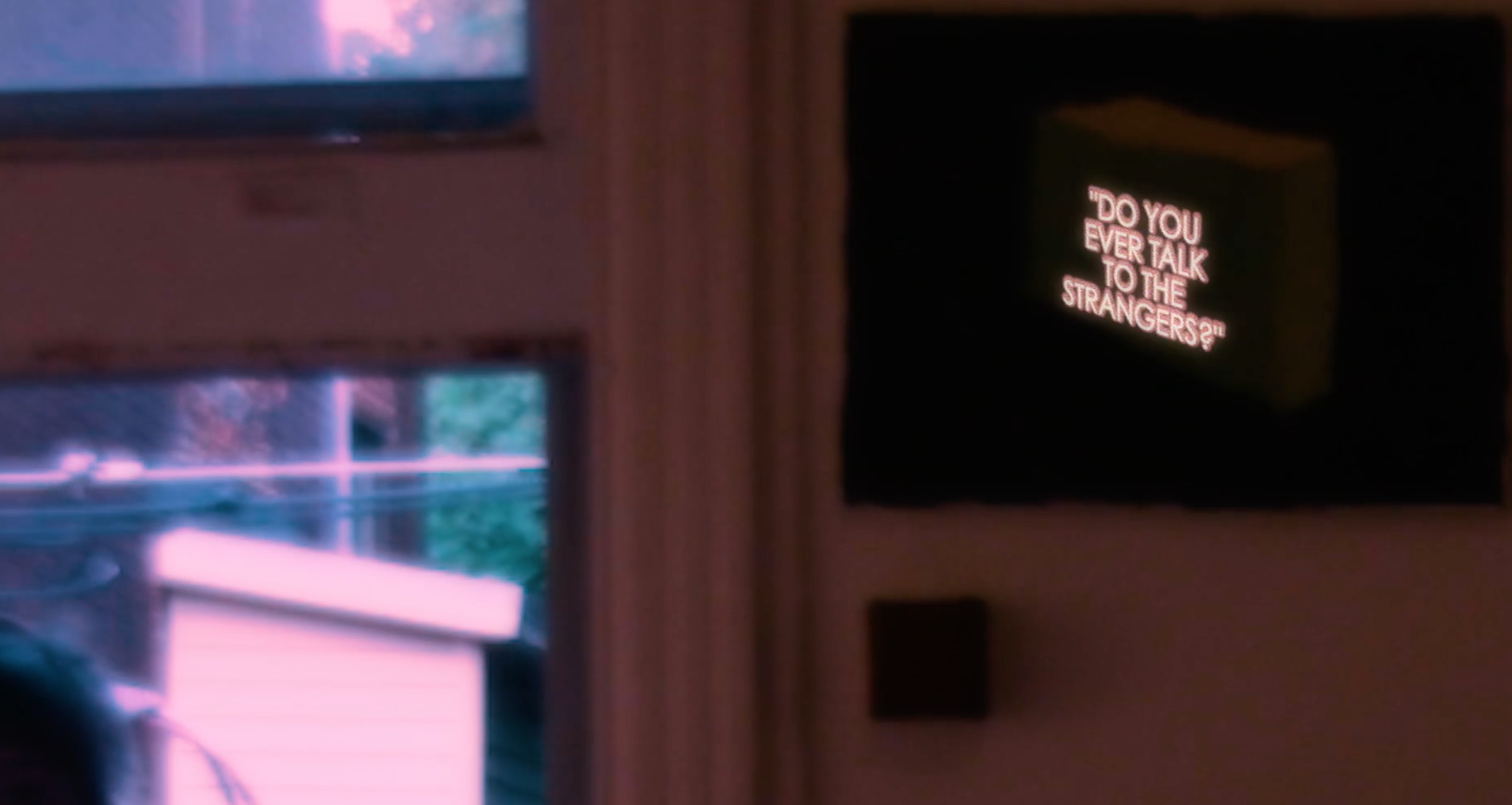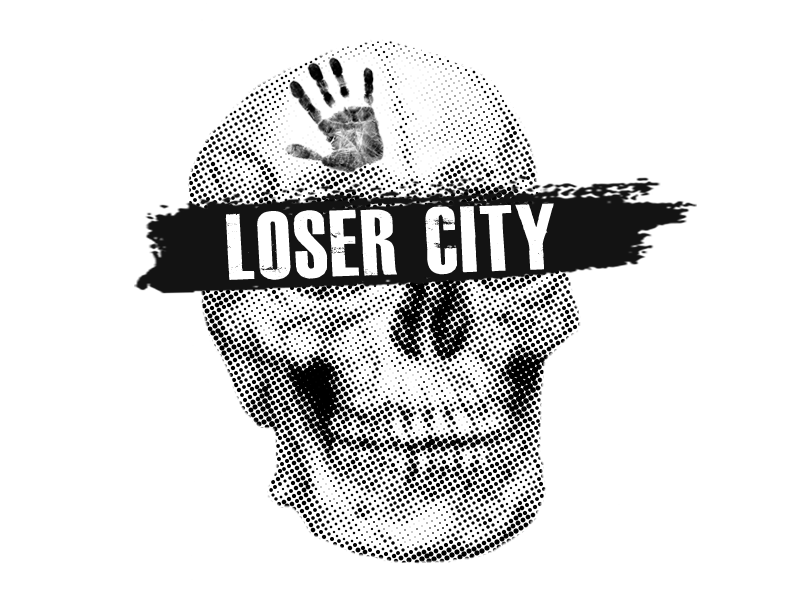We hold these truths to be self-evident, that all men are created equal, that they are endowed by their Creator with certain unalienable Rights, that among these are Life, Liberty, and the Pursuit of Happiness. – U.S. Declaration of Independence
Unfortunately, the history of American public discourse is one marred with both the attempt to erase blacks and their suffering and to find pleasure in the suffering of others (Guerrero & Leonard, 2012). The “Pursuit of Happiness,” in most cases, is deemed central to hegemonic power, or white supremacy (Rodriquez, 2007). Paired with new media and mobile technologies, this ongoing white racial domination is further encrypted in the fabric of American society through new means of communication and oppression.
In their article, “Playing Dead: The Trayvoning Meme & the Mocking of Black Death,” Lisa Guerrero and David J. Leonard argue that “the marriage of communication innovation with racist stagnation constitutes something new … in the history of the system of racism in the United States” (2012). “Trayvoning,” according to descriptions on GlobalGrind.com, an online pop culture-critiquing source, is the “meme-ification” of Trayvon Martin’s death by asking Internet users to post photos of themselves in a hoodie, with Skittles and Arizona iced tea, posing as if they have been shot in the chest (“Trayvoning,” 2012). Such a despicable and dehumanizing act re-casts and performs racial injustice by turning one’s pain and suffering into “a spectacle of white pleasure that further denies the humanity of black people” (Guerrero and Leonard, 2012). With new means for communicating, posting, sharing, and expressing oneself on the Internet, more opportunities are opened up for the privileged to reveal their entitlement and to remain relatively indifferent to social injustice, allowing the continued trivialization of the powerless. “Trayvoning” is an undesirable result of a revolutionized, systematic racism that has been deeply embedded in the American culture and way of life. Accordingly, Guerrero and Leonard posit that new technology redefines racial identities and hegemonic relationships, and not for the better.
While new media and social networking [are] “transforming” our society, in certain ways, bringing people closer together, if only seemingly so, [their] “newness” seems only relative to [their] potential as a new frontier in which to deploy and recycle the same old narratives and tropes, to continue a history of injustices that define the American experience. (n.p.)
With media as the focal point for much of the criticism of the perpetuation of stereotypes and racial injustice, media professionals are called to “struggle with the moral dilemma of responding to the concerns of those who object to unflattering or unrealistic portrayals” while considering the “legitimate and acceptable roles some stereotypes play” in various media content (Day, 2006). As such, this essay seeks to explore and examine the racist aesthetic in one of the most popular social media today, Vine. By identifying the likeness between Vine and early minstrelsy, and by scrutinizing the identification process in racial stereotyping, this article considers the ethical dimensions in the video-sharing app as a new stage for racial comedy. I also seeks to establish strategies for confronting stereotyping on social-networking platforms based on three major ethical theories in moral reasoning, namely deontological, teleological, and virtue theories.
Six-Seconds: A Shortened Form of Something Bigger
Vine, a free mobile app that allows users to create and share short, looping videos, was launched January 2013 by a three-man company based in New York (AllThingsD.com, 2013). Dom Hofmann, Rus Yusupov, and Colin Kroll initiated the video-sharing startup in June 2012 to allow users to create video clips up to six seconds long, recorded via the in-app camera. Hofmann (2013) on the app’s blog site writes that “posts on Vine are about abbreviation — the shortened form of something bigger” (“Introducing Vine”). The co-founder envisioned Vine videos to be “little windows into the people, settings, ideas and objects” that make up everyday life (Hofmann, 2013). “They are quirky, and we think that’s part of what makes them special,” Hofmann added. In October 2012, Twitter acquired Vine as its official video-sharing app (AllThingsD.com, 2013). Since its debut, Vine has been made a freeware across major mobile platforms, including iOS, Android, and Windows 8. Within months, Vine became the most downloadable app in these app stores and most used video-sharing app on the market (Moore, 2013).
As expressed on the Vine homepage, the app creators believed that “constraint inspires creativity” (“Introducing Vine,” 2013). Given the constraint in recording time, Viners (Vine users) are forced to fit their stories into the six-second video frames. In doing so, Viners adopt a minimalistic approach in video production by eliminating less important elements from the recording. As seen on “Best Vines,” a Facebook page dedicated to curating “the funniest and most clever Vines,” most Vine videos connect snippets of an event to tell a story. This is done by simply tapping and holding the device’s screen to record and by releasing to stop.
However, when Viners are forced to strip away the less necessary scenes of their video, they eliminate important elements that are essential to telling a complete story. This becomes problematic in ethnic humor, as racist or stereotypical jokes may be perceived out of context. Context refers to the occasion, or situation, that informs the viewers about why and how a story was told. Watching a Vine video sans context leaves viewers to their own interpretations of the message and purpose. A Vine video may provoke anger, or it may simply convey an inaccurate message regarding certain representations of an ethnicity and thus misinform the viewers about that particular race. The subsequent sections look at how racist “meme-ification” of ethnic stereotypes leads to negative representations of a culture and reinforces the impact of hegemonic power on cultural identification.
#Blackpeople vs. #Whitepeople: Modern Day Minstrels
Julie Kayzerman of Metro, a free metropolitan newspaper distributed across Europe, North and South America, and Asia, named Vine as the latest platform for racist rages like those in the minstrel shows of the 1840s. Lampooning black Americans as dim-witted, lazy, and buffoonish, minstrelsy was an American entertainment comprised of musicals, comic skits, and variety acts (Lott, 1991). Kim Pearson, chair of the department of African-American studies at The College of New Jersey, argued there are parallels between the minstrel show and popular culture today, such as Vine. These connections will be identified in the following discussions.
On the Explore section in the Vine app, one can find organized categories including comedy, arts and experimental, family, food, and cats. Viners can also search for tagged videos using hashtags like “#cars”, “#camp”, and “#party.” It would not take long before Viners find racially themed videos tagged under “#blackpeople,” “#whitepeople,” “#whitemoms,” “#blackmoms,” or keywords similar to these aforementioned hashtags. A common plot for these racial videos is the comparison between black and white cultures. For instance, the video “White People Dunking vs Black People” begins with two white teenagers celebrating a good shot in basketball with a simple “Good job!” It then closes with two black teenagers celebrating their slam-dunk with wild gestures, loud cheers, and chest bumps, portraying a barbaric stereotype for black people.
A Viner by the name of Mariam Emter posted a video with the typical “#whitepeople” and “#blackpeople” hashtags to play off the comparison plot in the untitled clip. The video shows a young girl reciting two sets of dialogue. The first (white-people situation) being, “Daddy, can you tell me one story?” The girl replies to herself saying, “OK.” The clip then cuts to the second dialogue with the same girl asking the same question (implying black-people context), “Daddy can you tell me one story?” With a dramatic twist, the girl pulls out a gun, points it at the camera, and says, “What the fuck do you think I am, meh?”
In merely six seconds, the two preceding Vine videos have portrayed black culture in a less desirable light. Both videos’ creators negatively represent African Americans as wild and violent. In many ways, these Vine videos with racial overtones and negative stereotypes are simply technologically refined minstrels, which mock black culture as uncivilized. The “black vs. white” dichotomy further reinforces tension between the oppressed and their dominator. According to Patricia Curtin and T. Kenn Gaither (2007), binary oppositions “provide the strongest demarcations of difference, which can lead to stereotyping as the oppositions become ultimately reductionist, ignoring the many degrees of relationship that exist between the poles.”
Pearson told Metro, “Historically, members of a European and non-black working class people who had been discriminated against on the basis of their class and ethnicity gained social status by joining in the condemnation of blackness” (“Vine: The newest form,” 2013). Such discrimination in Vine videos may impact viewers, especially when there’s a lack of context, teaching them to accept racial boundaries. As issues and narratives go through cycles that are context-dependent, the lack of context thus affects how stories are told and perceived (Curtin and Gaither, 2007). Brenda Cooper (1998), in analyzing relevancy and spectatorship in Spike Lee’s Do the Right Thing, says that intersection of a viewer’s cultural subjectivities and mediated text — such as Vine videos — is critical to identifying and understanding the interpretation processes used by viewers. This is because the concept of relevance doesn’t separate what the text (i.e. video) does to the viewers from what the viewers do to the text. This concept offers researchers a critical tool for understanding the sans-context interpretation viewers may assign to the Vine videos, which lacks critical examinations of the socially situated meanings in these videos. Pearson further suggests, “when members of one group are racially marginalized, there is sometimes the tendency to internalize that racism and engage in behavior that negatively portrays their own race” (2013).
Black Authorship of Black Vines
It is not uncommon to find that some Viners post and share racist stereotypes or jokes about their own ethnicity. While some may find it indefensible, scholars of rhetoric and cultural studies are interested in learning the motivation underlying such behaviors. Some theorists argue there are processes of assimilation to help marginalized minority cope with discrimination. In his famous essay, A Rhetoric of Motives, Kenneth Burke (1950) suggests that identification occurs as a condition for specialized activities to take place. .
The fact that an activity is capable of reduction to intrinsic, autonomous principles does not argue that it is free from identification with other orders of motivation extrinsic to it. Such other orders are extrinsic to it, as considered from the standpoint of the specialized activity alone. But they are not extrinsic to the field of moral action as such, considered from the standpoint of human activity in general. … Identification is a word for the autonomous activity’s place in this wider context. (27)
According to Burke, cultural belongingness is hence rhetorical, and cultural identification can become sinister when unacknowledged or hidden. A rhetorical enactment theory may shed light on Viners’ self-teasing behaviors and see them as coping strategies under hegemonic power.
Another explanation stems from the cultural narrative perspective. Curtain and Gaither (2007) find that narrative theory demonstrates that tapping into shared myths can be a powerful persuasive tool because they resonate with people’s deep-seated emotions and beliefs. “I Love Black People,” a compilation that collects Vine clips that focus only on Black culture, shows African Americans playing an active part in producing images of racial stereotypes. This suggests the lack of a sense of supremacy of a minority culture as evident in the downplaying its own identity. Cultural studies scholars believe meanings are constructed within the range made possible by institutional frameworks. They are then reconstructed as people use them in their particular social situations. “The meaning that any object has at any given time is a contingent, historical achievement” (du Gay, 1996). Hence, a critical look at any demeaning behaviors, either by the members of the marginalized culture or by others, is crucial to developing strategies for intervention. In order to stage this intervention, media professionals must first examine the roles of stereotypes in a social platform such as Vine.
Cultural Stereotypes in the Vine-yard
Charles Zastrow and Karen Kirst-Ashmann define stereotypes as a “fixed mental image of a group that is frequently applied to all its members” (1987). According to media scholar Louis Day (2006), the media have been blamed for much of the perpetuation of stereotypes. Nonetheless, it is important for media professionals to identify the struggles with the moral dilemma of responding to the concerns of those who are subjected to unflattering or misrepresentative portrayals while defending the legitimate roles that some stereotypes play in media content. Day argues that in a pluralistic culture such as the United States, media practitioners must not just eliminate all stereotypical portrayals but also consider the “fundamental fairness” in stereotypical images of certain segments of society (2006).
According to Day and ethicist Deni Elliott, cultural stereotypes play a vital role of fulfilling social functions. On the one hand, stereotyping helps media institutions “to attract and hold audience for advertisers.” On the other hand, stereotypes are a tool for media institutions in social-engineering “a more egalitarian culture” (Day, 2006). While scrutinizing the pros and cons of racial stereotyping, one must take into consideration the role of stereotypes in shaping societal ethics and worldviews. Therefore, there is value in investigating the legitimacy of stereotyping from three ethical perspectives. The following section applies three kinds of ethical theories to evaluate the “meme-ification” of Black culture on Vine.
Ethical Theories: Deontological, teleological, and virtues
In his book, Ethics in Media Communications: Cases and Controversies, Day (2006) identifies three kinds of ethical theories based primarily on the teachings of Kant, Mill, and Aristotle, namely deontological theories, teleological theories, and virtue theories. These theories are most commonly used moral reasoning in media communications and thus I have committed to using them for responding to the ethical problems in Vine.
Deontological theories, also known as duty-based theories, assume that there are ethical rules that should be universally applied and that respect humanity. Deontologists (such as Immanuel Kant) believe that the ends do not justify the means. In other words, one simply cannot use foul means to do good. A deontological perspective would object any act of prejudice or discrimination, including racial stereotyping. As the universal moral standard according to a Kantian maxim of “do not deceive,” Viners’ stereotypes would be deemed demeaning and thus be avoided.
The second kind of ethical theories, teleological, are consequence-based. Consequentialists (such as John Stuart Mill) seek out ethical choices that maximize good consequences. They are deemed to be more flexible than deontological theories as they allow more leeway in ethical choices, especially when dealing with difficult situations. From the teleologist perspective, one might argue that the anticipated consequences in Viners’ stereotyping — that is, the relative benefits and harms to the audience — outweigh a universal maxim such as “do not deceive.” A teleologist would concur that racist jokes on Vine help marginalized cultures gain popularity and normalize themselves among white supremacy. This may lead to more harmonious interactions between the oppressed and their oppressors, eliminating unnecessary conflicts. As such, moderate racial stereotypes on Vine might be acceptable to a teleologist.
Finally, virtue theory, as represented by Aristotle’s golden mean, are ethical decisions concerned with character building. Aristotle’s golden mean seeks to provide a middle-ground solution in cases in which there are extreme positions. Though most Vines are seemingly racist to a moderate degree, a critical theorist may still regard any racial stereotype as highly offensive. Yet an advocate for the marketplace of ideas and freedom of speech would argue that any censorship threatens a democratic society. Hence, an Aristotelian approach to confronting racial stereotypes on Vine would be to allow Viners to continue sharing racially sensitive content while requiring Vine to provide a warning for mature content and an option for Viners to report inappropriate content. By doing so, Viners are trusted with the autonomy to post community-building content and be watchdogs in the world of Vine. This approach allows both the marketplace theory and freedom of speech to endure. As such, virtue theory seems to be the most viable option for responding to racial stereotyping on Vine. Especially for an online social platform such as Vine, virtue theory offers a best-of-both-worlds solution to racial stereotyping where public expression meets individualized control. This solution allows for Viners to still use Vine as a medium to display their cultural identities while letting all viewers to also have a say about the worthiness of the display.
Conclusion: Toward a critical understanding of racial stereotyping in social media
Based on the foregoing analysis, an Aristotelian virtue perspective seems to best serve the interests of Vine and the community of Viners. A happy medium for both extreme positions can be achieved by allowing Viners to maintain their freedom of expression while keeping an option for overtly inappropriate stereotypes to be reported and removed. Although there are many other ethical considerations to be identified and attended to in various social media, the recognition of racial stereotyping in a popular social network such as Vine is an important first step to critical examination of other similar platforms.
For media professionals, this article represents further thinking about ethics in new media. In it, I have highlighted racial tension caused by ignorant and inconsiderate behaviors associated with a social-networking app. By scrutinizing the process by which a marginalized group identifies with the dominant culture, this article has considered the ethical dimensions in using a video-sharing interface as a new frontier of minstrelsy. By privileging an egalitarian culture, I have suggested an Aristotelian approach to confronting racial stereotypes in Vine. Future studies should promote a continual effort of investigating and reconceiving social-sharing sites as educational and political spaces. At the same time, it is prudent to acknowledge the complications and contradictions involved in such work. This realization, however, cannot be an excuse for inaction. I urge media scholars to take on the responsibility of revealing social injustice and discrimination disguised as racist humors in the media, while, as Winograd and Flores (1986) point out, continuing “to work towards unconcealment … and let our awareness guide our actions in creating and applying technology” in social life.
:::

Jason Tham is a PhD student in Rhetoric and Scientific and Technical Communication at the University of Minnesota–Twin Cities. He teaches technical and professional writing, as well as first-year composition
through the Department of Writing Studies. Jason holds a BS in Mass Communications, MS in Mass Communications, and MA in English. His research interests include digital and visual rhetoric, networked pedagogy, and technical communication in the postmodern age. His work has appeared in Journalism & Mass Communication Quarterly and Intercom.
Works Cited
Allthingsd.com (2012). Twitter Buys Vine, a Video Clip Company that Never Launched. Retrieved October 20, 2013.
Burke, K. (1969). A Rhetoric of Motives. Los Angeles, CA: University of California Press.
Cooper, B. (1998). ‘‘The White-Black Fault Line’’: Relevancy of Race and Racism in Spectators’ Experiences of Spike Lee’s Do the Right Thing. The Howard Journal of Communication, 9, 205-228.
Curtin, P. & Gaither, T. (2007). International Public Relations: Negotiating Culture, Identity, and Power. Thousand Oaks, CA: SAGE Publications.
Day, L. (2006). Ethics in Media Communications: Cases and Controversies. Belmont, CA: Thomson Wadsworth.
du Gay, P (1996). Consumption and identity at work. Thousand Oaks, CA: Sage.
Elliott, D. (1996). Ethical and Moral Responsibilities of the Media. Images That Injure: Pictorial Stereotypes in the Media. Ed. Susan Dente Ross, Paul Martin Lester. Santa Barbara, CA: Praeger Publisher. 9-19.
Globalgrind.com (2012). “Trayvoning” is the Most Disrespectful Sh*t Ever! Retrieved October 20, 2013.
Guerrero, L. & Leonard, D. (2012). Playing Dead: The Trayvonning Meme and the Mocking of Black Death. New Black Man (in Exile), Newblackman.blogspot.com. Retrieved October 20, 2013.
Hoffman, D. (2013). Introducing Vine. Blog.vine.co. Retrieved October 20, 2013.
Kayzerman, J. (2013). Vine: The Newest Form of Minstrel Shows? Metro. Metro.us. Retrieved October 21, 2013.
Lott, E. (1991). ‘The Seeming Counterfeit’: Racial politics and early blackface minstrelsy. American Quarterly, 43(2), 223-255.
Moore, R. (2013). Vine Takes Early Command in the Mobile Video Market Over Viddy, Socialcam, and Others Despite Low Adoption. Techcrunch.com. Retrieved October 20, 2013.
Rodriguez, D. (2007). The meaning of “disaster” under the dominance of white life. What lies beneath: Katrina, race, and the state of the nation. Cambridge, MA: South End Press. 133-156.
Winograd, T & Flores, F (1986). Understanding Computers and Cognition: A New Foundation for Design. Reading, MA: Addison.
Zastrow, C. & Kirst-Ashmann, K. (1987). Understanding Human Behavior and the Social Environment. Chicago, IL: Nelson-Hall.
Context Links:
A blog post about racist comedy on Vine (link no longer accessible), courtesy of the Occidental College Sociology Department.
A Yale professor’s HuffPost analysis of racist Vines [link no longer active]
A breakdown of ethical theories and terms from Drexel University



